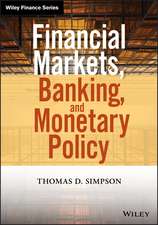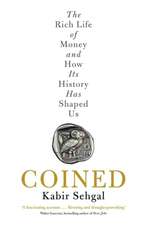Demand for Money: An Analysis of the Long-run Behavior of the Velocity of Circulation
Autor Lars Jonungen Limba Engleză Paperback – 30 iun 2003
Annual time series of velocity for several countries from the late nineteenth century to the late twentieth century display a U-shaped pattern. Existing theories can explain each section of the velocity curve-the falling, flat, and rising parts-but the overall pattern is not consistent with any one theory. Here the authors put forth a comprehensive explanation for this behavior over time. Their theory is largely an extension of the approach of Knut Wicksell, the Swedish economist who stressed the role of substitution between monetary assets. This approach, which emphasizes institutional variables, is incorporated into the arguments for the traditional long-run money demand (velocity) function. Four types of empirical evidence strongly support the authors' theory: econometric studies of the long-run velocity function for several countries; a cross section study of approximately eighty countries in the postwar period; a case study of the Swedish monetization process in the fifty years before World War I; and an examination of the time series properties of velocity.
Demand for Money suggests that institutional factors, as opposed to real income, play a greater role in velocity than previously thought. And these institutional factors have a major impact on monetary policy. This is a book that will prove of great value to economists, monetary strategists, and policymakers.
| Toate formatele și edițiile | Preț | Express |
|---|---|---|
| Paperback (1) | 409.48 lei 6-8 săpt. | |
| Taylor & Francis – 30 iun 2003 | 409.48 lei 6-8 săpt. | |
| Hardback (1) | 999.46 lei 6-8 săpt. | |
| Taylor & Francis – 22 sep 2017 | 999.46 lei 6-8 săpt. |
Preț: 409.48 lei
Nou
Puncte Express: 614
Preț estimativ în valută:
78.35€ • 82.10$ • 64.77£
78.35€ • 82.10$ • 64.77£
Carte tipărită la comandă
Livrare economică 11-25 aprilie
Preluare comenzi: 021 569.72.76
Specificații
ISBN-13: 9780765809612
ISBN-10: 0765809613
Pagini: 208
Ilustrații: 1
Dimensiuni: 152 x 229 x 13 mm
Greutate: 0.29 kg
Ediția:Revised
Editura: Taylor & Francis
Colecția Routledge
Locul publicării:Oxford, United Kingdom
ISBN-10: 0765809613
Pagini: 208
Ilustrații: 1
Dimensiuni: 152 x 229 x 13 mm
Greutate: 0.29 kg
Ediția:Revised
Editura: Taylor & Francis
Colecția Routledge
Locul publicării:Oxford, United Kingdom
Cuprins
Introduction; Evidence and theories of the long-run behavior of velocity; The institutional approach; The institutional approach: The long-run econometric evidence; Monetization and the behavior of velocity in Sweden, 1871-1913; The global evidence since the 1950s; The stochastic properties of velocity: Evidence for five countries; Conclusions and implications
Descriere
The income velocity of money-an inverse measure of the demand for money balances-is the ratio of the money value of income to the average money stock that the public (excluding banks) holds in a given period




















